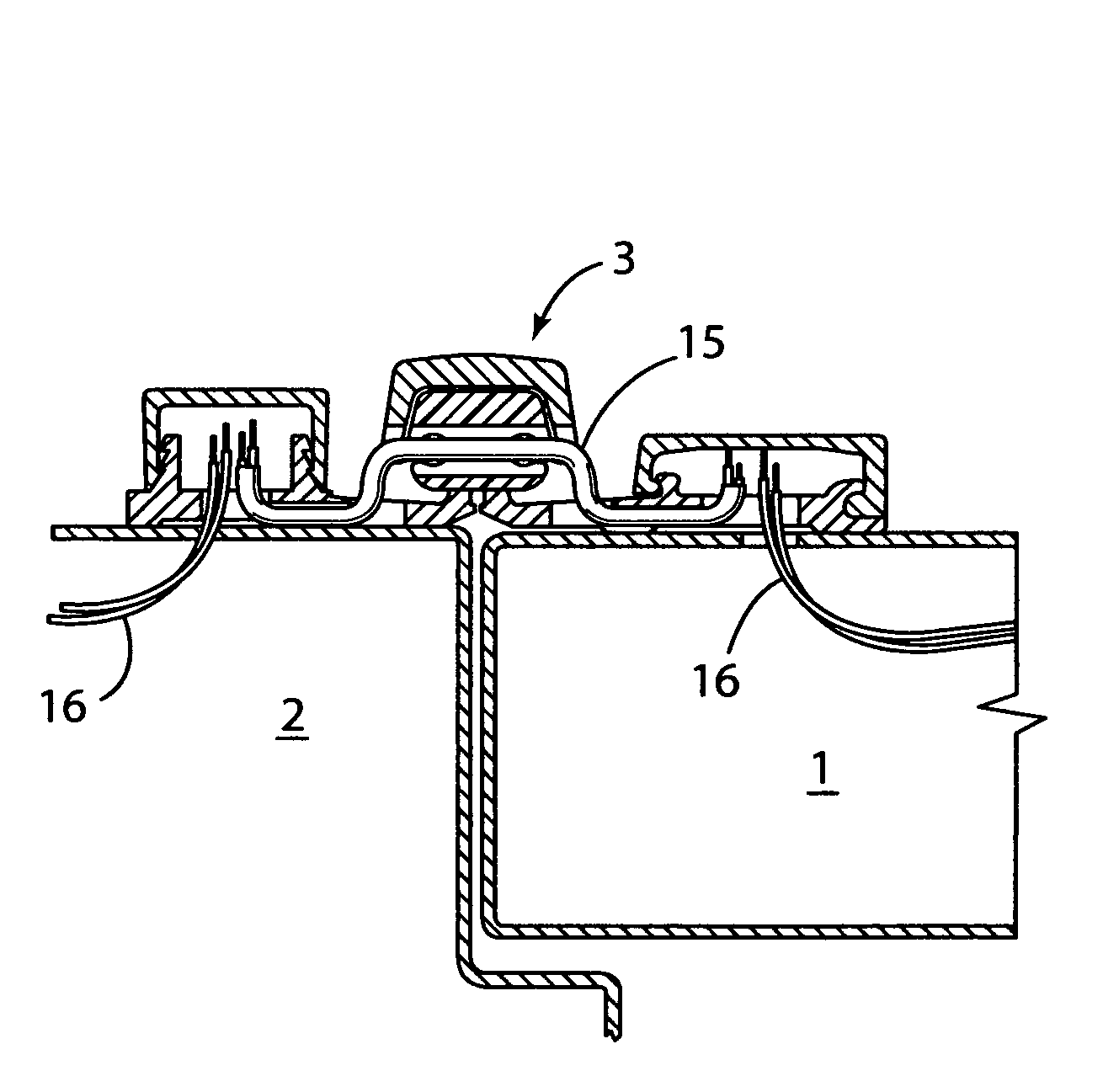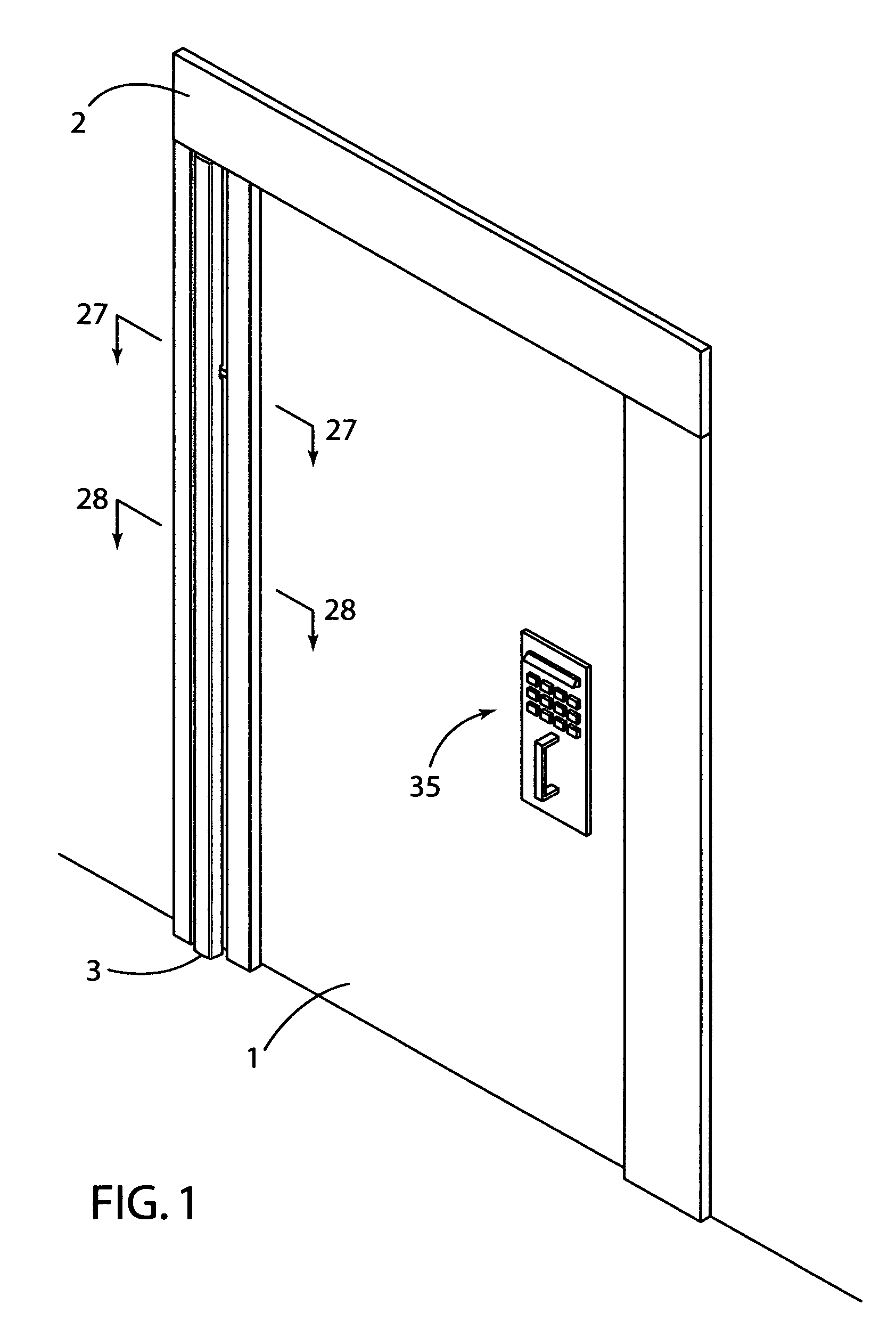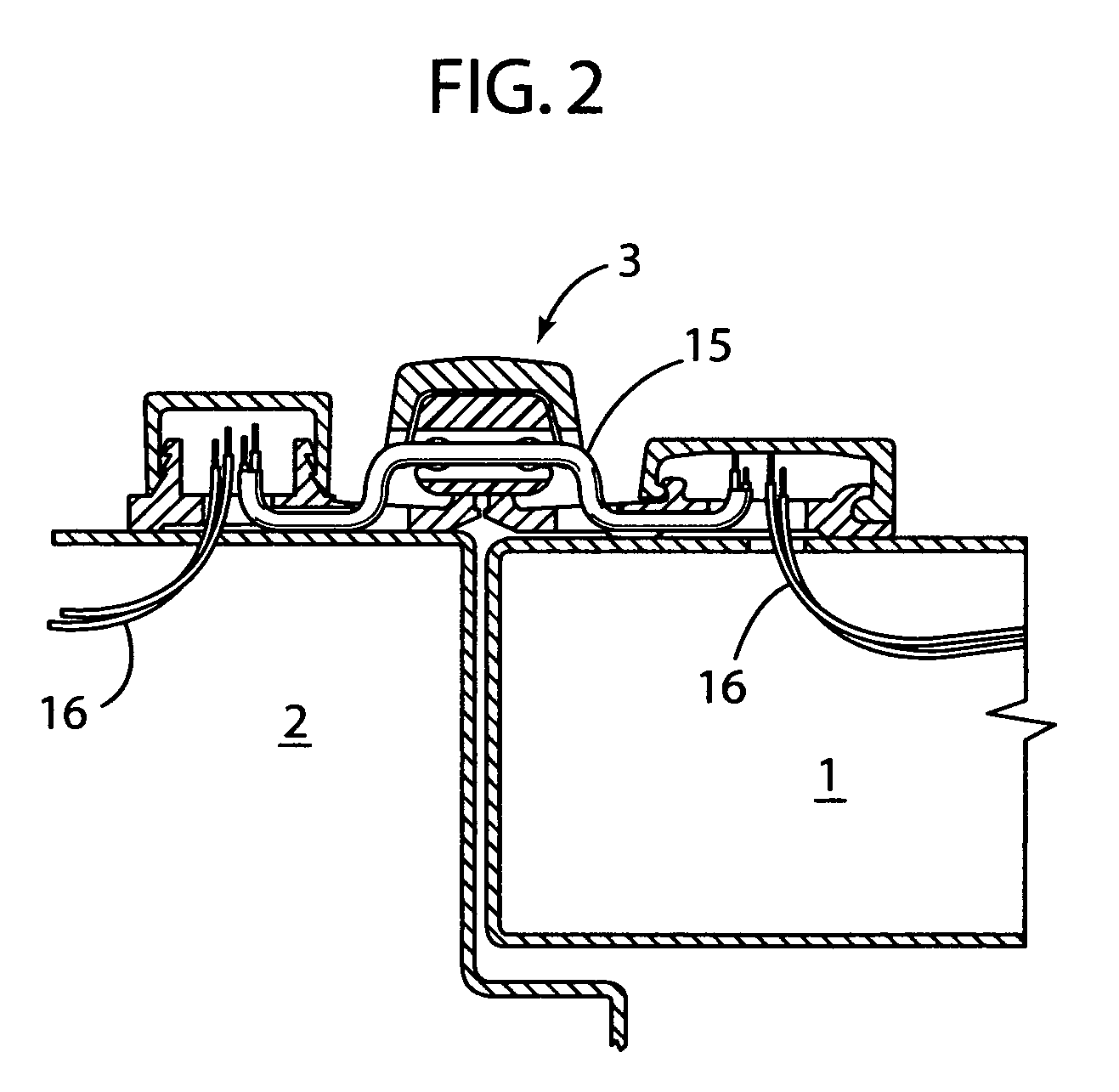Hinge with electrical wiring
a technology of electrical wiring and hinges, applied in the field of hinges with electrical wiring, can solve the problems of uneven opening and closing of doors, weakening gears, etc., and achieve the effects of reducing wear and tear, facilitating wiring passage, and less exposure of wiring
- Summary
- Abstract
- Description
- Claims
- Application Information
AI Technical Summary
Benefits of technology
Problems solved by technology
Method used
Image
Examples
Embodiment Construction
[0054]The preferred embodiments of the present invention consist of the following components as more clearly shown in FIGS. 1-13:[0055](1) A full surface mount type geared aluminum or equivalent continuous door hinge 3 of any length.[0056](2) From one to 15 strands of 22 gauge flexible wire 16 in lengths of from 5 to 36 inches.[0057](3) From at least 1 to about 3 modified thrust bearings 9.[0058](4) PVC or equivalent flexible tubing 15 in a diameter suitable to pass through a hole 10 in the modified thrust bearings 9.[0059](5) A gear cap 17 to cover the meshed gears 8 and bearings 9,31 and two covers 18,19 to cover the machined holes 11,13,25,26 in the plates 6,7 of the leaves 4,5.[0060]The essential equipment required to convert an ordinary geared continuous full surface hinge into the above embodiments include:[0061](1) A machine tool capable of repeatedly machining precision holes, channels and the like.[0062](2) Tooling capable of machining metals.[0063](3) Work holding fixtures...
PUM
 Login to View More
Login to View More Abstract
Description
Claims
Application Information
 Login to View More
Login to View More - R&D
- Intellectual Property
- Life Sciences
- Materials
- Tech Scout
- Unparalleled Data Quality
- Higher Quality Content
- 60% Fewer Hallucinations
Browse by: Latest US Patents, China's latest patents, Technical Efficacy Thesaurus, Application Domain, Technology Topic, Popular Technical Reports.
© 2025 PatSnap. All rights reserved.Legal|Privacy policy|Modern Slavery Act Transparency Statement|Sitemap|About US| Contact US: help@patsnap.com



